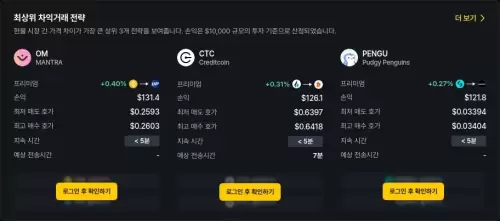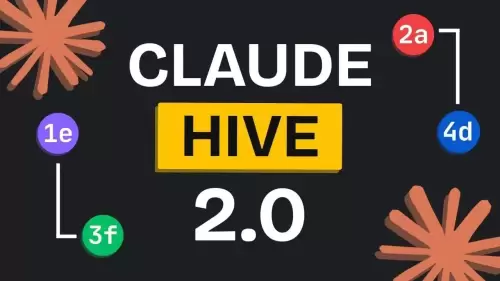 |
|
 |
|
 |
|
 |
|
 |
|
 |
|
 |
|
 |
|
 |
|
 |
|
 |
|
 |
|
 |
|
 |
|
 |
|
Cryptocurrency News Articles
MiCA Regulations Drive Tether From European Market, Creating Vacuum for RLUSD to Emerge
May 23, 2025 at 12:45 am
The European Union’s new MiCA regulations have sent shockwaves through the crypto ecosystem. These rules aim to bring stability to stablecoins, but the fallout has been swift and disruptive.

The European Union's new MiCA regulations have sent shockwaves through the crypto ecosystem. These rules, which aim to bring stability and oversight to the burgeoning industry, are set to take effect in August, imposing stringent new limits and requirements on stablecoin issuers operating within the EU.
The new regulations, which stand in contrast to the U.S. Congress's more relaxed approach to crypto regulation, are set to fundamentally alter the competitive landscape in the European market.
Key rules include a prohibition on paying interest on stablecoin balances, a mandate for issuers to hold at least 60% of their reserves in cash, and strict caps on daily issuance and redemption volumes. Additionally, stablecoin operations and compliance frameworks must align with those of EU-regulated banking institutions.
However, Tether, the issuer of USDT, the most widely used stablecoin globally, has announced its intention to withdraw its flagship product from major European crypto exchanges due to difficulties complying with the new regulations.
This decision has left observers pondering the implications for Bitcoin and XRP as the market adjusts to Tether's departure and the emergence of new MiCA-compliant stablecoins, such as those offered by Circle and Ripple.
Tether's Departure From European Market
As reported by CoinDesk, Tether is pulling its stablecoin, USDT, from European exchanges. This move follows reports that Tether was struggling to adjust its massive $150 billion operation to meet the demands of MiCA.
The new regulations are set to take effect in August, after which stablecoin issuers will be banned from offering interest-yielding products or derivatives to retail investors. Additionally, MiCA stipulates that at least 60% of an issuer's reserves must be held in cash or risk-free debt instruments, while the remaining 40% can be invested in marketable securities like bonds or short-term commercial paper.
Moreover, daily issuance and redemption volumes are capped at 1% of the issuer's total capital, which is limited to €1 billion (about $1.1 billion). Furthermore, stablecoin operations and compliance frameworks must align with those of EU-regulated banking institutions.
Faced with these new operational demands, Tether, unwilling to restructure its massive operation, chose to exit rather than comply. Consequently, top exchanges in Europe are delisteding USDT, leaving traders with fewer options and thinning liquidity across key trading pairs.
While Tether steps back, Circle has been actively pushing its MiCA-compliant stablecoins, USDC and its euro-pegged counterpart EURC, further into the European spotlight. But combined euro-denominated stablecoins still hover around just $250 million in market cap. USDC fares better at $61 billion, yet both remain far behind USDT's dominant position. That gap presents a significant opportunity one Ripple seems prepared to seize.
The Importance Of Ripple's Stablecoin
As reported by CCXV, Ripple's stablecoin, RLUSD, entered the market in December with full MiCA compliance baked in. It operates on both the XRP Ledger and Ethereum, offering flexibility that few can match.
Unlike other U.S.-centric stablecoin providers, Ripple has cultivated deep institutional ties globally. This global strategy is now paying dividends. Notably, last year, Ripple partnered with the Central Bank of Japan to explore cross-border payments.
Significantly, Ripple has also built relationships with regulators over the years. This allows it to scale quickly without legal friction. With a proven blockchain infrastructure and a focus on regulatory cooperation, RLUSD stands ready to capitalize on the vacuum left by USDT.
Instability From Tether's Exit
The instability from Tether's exit could extend beyond stablecoins. Bitcoin often relies on stablecoin liquidity for trading pairs. Thinner markets may lead to increased volatility, especially in Europe.
Moreover, if traders shift away from USDT, Bitcoin could experience sharper moves as liquidity dries up. However, XRP may be the unexpected winner in this realignment.
As RLUSD gains traction, demand for XRP could rise, especially on the XRP Ledger. If Ripple captures even a fraction of Tether's displaced volume, XRP could benefit significantly—potentially setting the stage for a breakout before year-end.
Disclaimer:info@kdj.com
The information provided is not trading advice. kdj.com does not assume any responsibility for any investments made based on the information provided in this article. Cryptocurrencies are highly volatile and it is highly recommended that you invest with caution after thorough research!
If you believe that the content used on this website infringes your copyright, please contact us immediately (info@kdj.com) and we will delete it promptly.
-

-

-

-

-

-

-

-

-

- Token Chart Buzz: Analysts Eye Potential Price Increase with Mutuum Finance (MUTM)
- Aug 03, 2025 at 06:00 pm
- Analysts are buzzing about Mutuum Finance (MUTM), a DeFi player showing potential for a price increase. Is it the next 100x gem? Let's dive into the token chart and the reasons behind the optimism.






























































